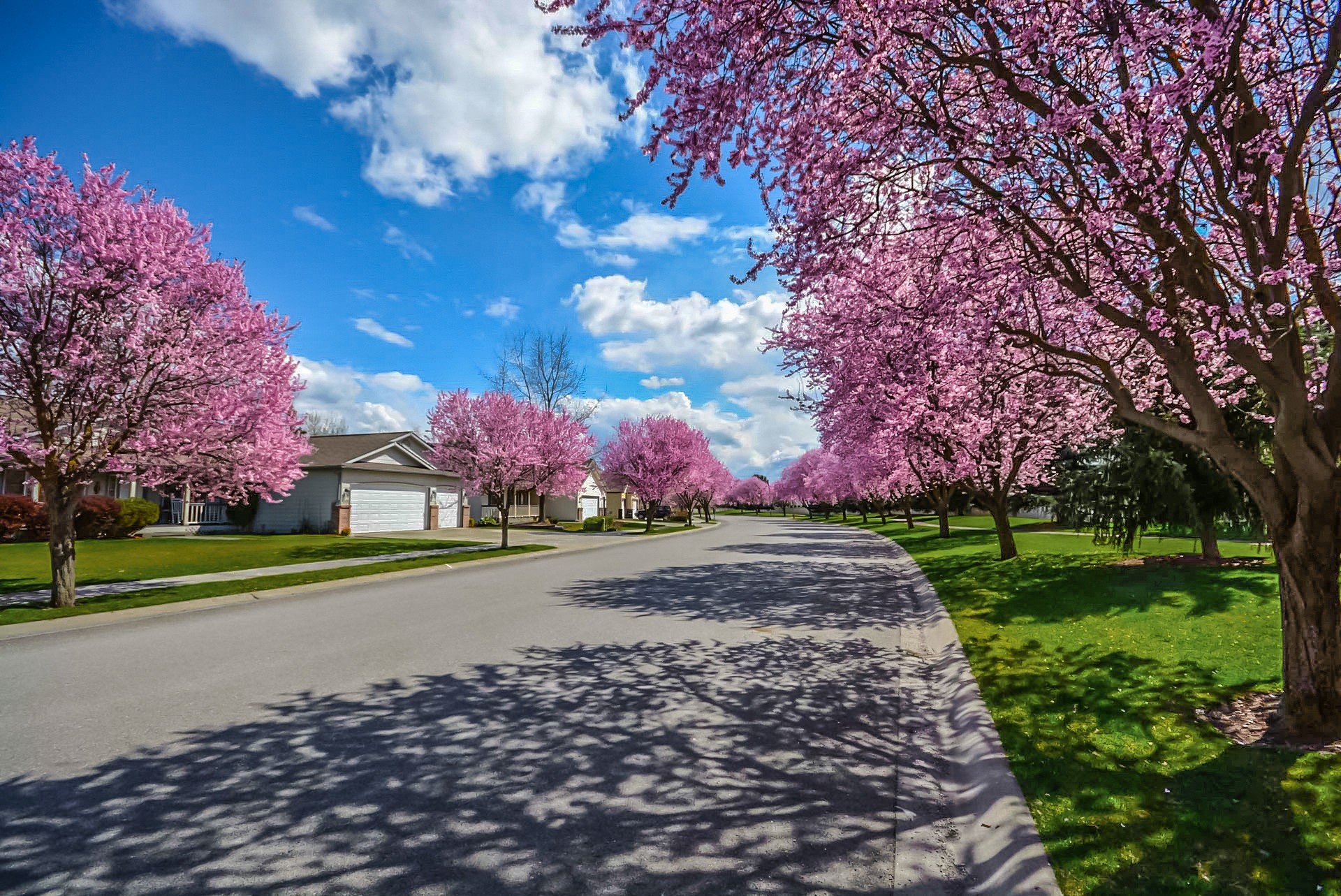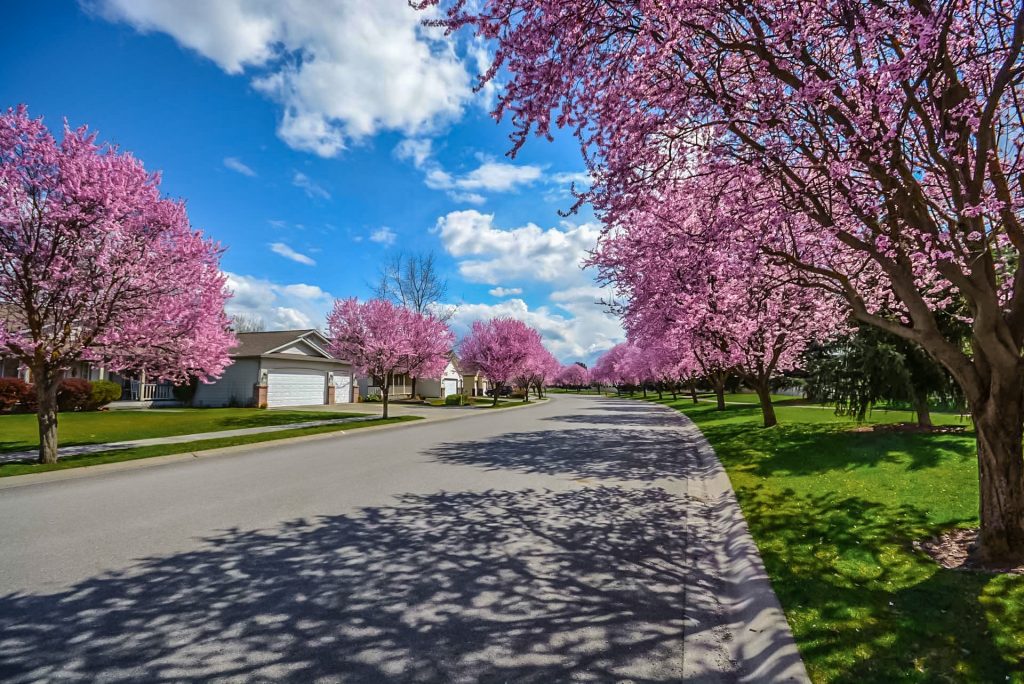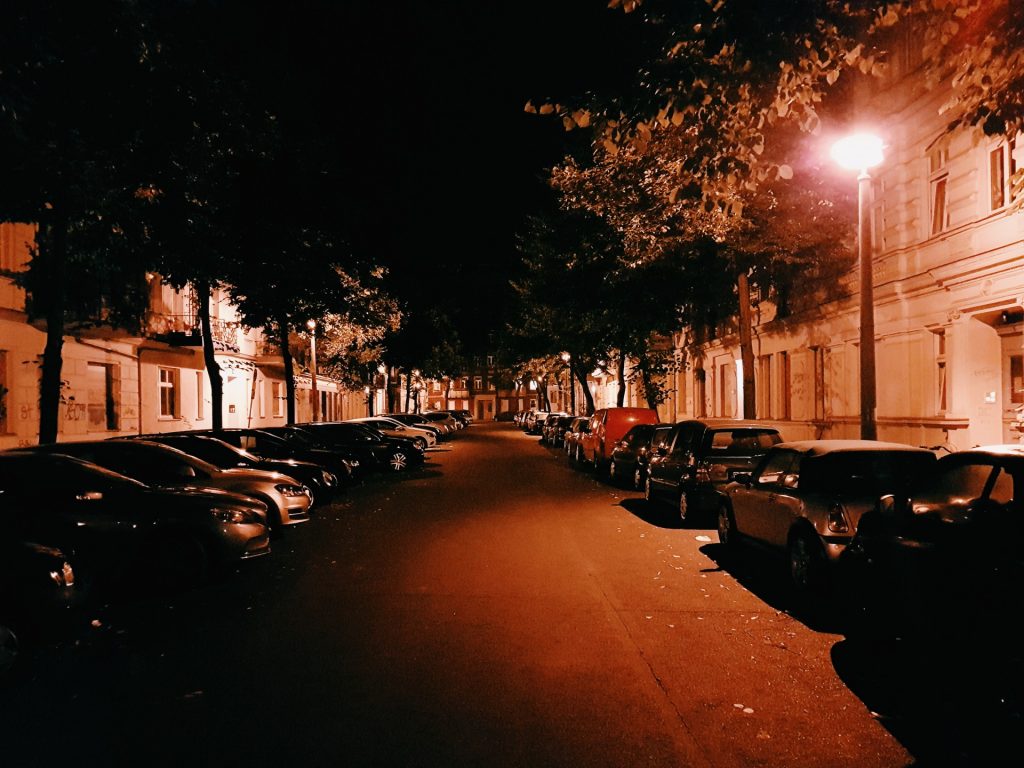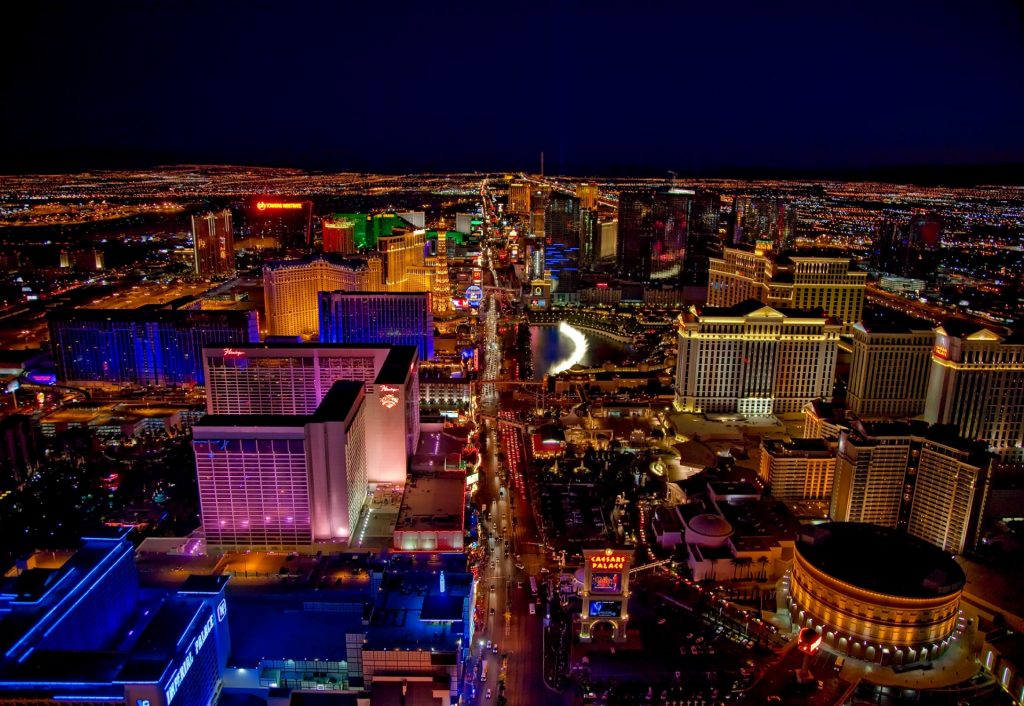Thinking about buying a home? How to choose the perfect neighborhood for you and your family
 If you’re buying a new home, the neighborhood you choose can be just as important as the choice of home. There are plenty of great spots in Las Vegas Nevada. But how do you go about choosing the perfect area for your lifestyle? An area that is both welcoming and laid back, that is not only close to everything you love but miles away from everything that drags you down, except for work. Also, it has to be close to work.
If you’re buying a new home, the neighborhood you choose can be just as important as the choice of home. There are plenty of great spots in Las Vegas Nevada. But how do you go about choosing the perfect area for your lifestyle? An area that is both welcoming and laid back, that is not only close to everything you love but miles away from everything that drags you down, except for work. Also, it has to be close to work.
Las Vegas neighborhoods are some of the most distinctive neighborhoods in America. A number of different areas around the city offer great opportunities for living, working, and recreation.
Indeed, finding the safest neighborhoods in Las Vegas is easy when you know where to look, and we have a guide to help you in your search for finding the safest neighborhoods in Las Vegas for you and your family. Unlike many big cities in America, Las Vegas is not noted for the presence of a downtown district per se, and although the Strip is not without the craziness that draws millions of travelers each year to town, the area represents a very small proportion of the overall territory of Las Vegas’ urban sprawl. Indeed, the vast majority of Las Vegas throws off a distinct suburban vibe throughout the many essential neighborhoods that house more than two million people living in the greater Las Vegas metropolitan area.
There’s nothing worse than buying a home and then realizing that you hate the neighborhood. So, how to choose the perfect neighborhood for you and your family?
Start by creating a list of what you need in a neighborhood. To create your short-list, it pays to start by asking the right questions:
What type of neighborhood environment do you seek? A downtown, urban vibe? A close-to-town location that blends the aspects of both city and suburban life? A leafy suburban feel? A laid-back, out-in-the-country setting?
What types of shopping, restaurants and businesses would you like nearby? A shopping mall? A favorite coffee shop? Sports fields and open park land? A movie theater? A wide array of restaurants? Art galleries and museums? A library? Live music venues? This question is related to the one above and will also help you define what matters most to you.
What type of commute do you seek? Do you work from home? Do you travel frequently and thus want quick access to the airport? If you commute daily to work, would you prefer to do so by car or mass transit? And how many minutes each way would you ideally prefer to spend traveling to and from work?
If you want more space and privacy and don’t require quick access to the heart of your city, the suburbs may be the place for you.
Location, Location, Location
Consider this question: If I lived in this neighborhood, how far am I from ________?
Fill in the blank with the places that are most important to you. Topping that list will probably be your work, your desired school (if you have kids), the homes of your friends and family, your favorite pastimes, and the nearest grocery store. Even if you don’t want to live close to these places, you still want to know how far you are away.
If you’re not much into cooking, you’ll probably want to know about nearby restaurants that deliver. If you’re heavily involved in a local tennis club, it may dictate how far you’re willing to move.
Your lifestyle and hobbies will play a big role in deciding where you move.
Get the Suspects
With your area of the city in mind, start digging up information. Find interesting neighborhoods online, ask local real estate agents for recommendations and compile all the background information you can find, including:
School information: Look into the local public and private elementary, junior and high schools, as well as daycare programs.
Crime statistics: Most real estate sites have statistics that tell you how the zip code’s crime rates measure up to the national average. If you want specifics, call the local police station.
Parks and recreation: How far is it to the closest park or recreation center?
Neighborhood associations: Does the community you’re looking at have one, and, if so, are there lawn or construction restrictions? Is there a yearly fee?
Tourist attractions: Get a guidebook or check out the convention and tourism bureau’s Web site to see all the city has to offer.
Seeing is Believing
Before continuing further, let’s get superficial for a moment. Do you like the way the neighborhood looks? Are the lawns neatly manicured? Are the roads taken care of or do they have unsightly and unsafe potholes and bumps? Are the streets chaotic or quiet? Are people out and about enjoying the neighborhood and walking their dogs down the sidewalk? Is there a sidewalk?
Take a moment to consider what’s most important to you when it comes to the look and ambience of a neighborhood. Some of us like the hustle and bustle of an urban cityscape. Others much prefer the quiet melody of country living.
What do you notice first about the neighborhood? Do the streets have curb appeal? Are the houses well-maintained? Do the shops and restaurants look hip and inviting? You’ll want to feel good about where you call home, and impress buyers when you’re ready to move on.
Visualize yourself in the neighborhood. Think of your daily routine. If you can’t live without a morning latte, is there a coffee shop nearby? Where will you walk your dog or go jogging? You’ll enjoy the neighborhood more if it’s easy to do what you like.
Observe the neighborhood at different times of the day. Driving through will help you get a snapshot of life in the community — good and bad. Do the roads turn into a parking lot after school or during rush hour? Are people using decks or grills in the evening? Do people keep to themselves or are neighbors and kids socializing? Are the streets well-lit at night? These visual clues can help you decide if you’ll fit in.
Make sure the local schools make the grade. Even if you don’t have kids, pay a visit to the nearby schools. High ratings are great, but seeing the buildings is much more telling. It will be easier to sell your house later if the schools are nice.
Look for warning signs. Be on the lookout for signs that the neighborhood is in trouble. Do you see abandoned buildings or vandalism? Are there a lot of “For Sale” signs or rentals? If the community goes downhill, so does your house’s value.
Stop and listen. Bird and nature sounds are generally pleasant, but what about noise from the highway, airport, hospital, train tracks or nearby clubs and bars? It’s not very relaxing to listen to trains screech by during your morning coffee – especially not every morning.

Talk to your future neighbors. Ask how they like the area, and get the dirt on anything they don’t like about the place. What do they want to change? What’s their favorite place to hang out? If they’re rude to you, they probably wouldn’t be good neighbors anyway. Talk to more people. You’ll get the best information from regular people who aren’t trying to make a sale. Hit up your waiter for information when you’re checking out the local food, or ask a gas station attendant to spill what they know about your chosen neighborhood. Be transparent. Explain that you’re looking to move to the area. There’s no need to keep this to yourself, and you may come away with new friends! Keep the questions casual. Questions to ask may sound like:
- Is it usually quiet around here?
- What are the neighbors like?
- Are there a lot of people moving in or out?
- Is there anything fun to do around here?
- Are there lots of families with kids? Around what ages?
- Is the school around here any good?
Of course, I wouldn’t recommend asking these questions in rapid fire one after the other. No one wants to feel like they’re being interrogated. Instead, work one or two of your most important ones into your interactions with the local residents.
Specifically, are there any smells? You can’t experience unpleasant smells on the Internet and they’re not advertised in tourism brochures, but they can certainly affect your decision to live in an area. Take a big whiff of the air, and ask around if you smell any fishy or just bad odors.
Ask yourself! If the neighborhood matches your taste in a living environment – and if it meets your criteria. Just because it’s a nice neighborhood doesn’t mean it’s the one for you. If the neighborhood meets your list but still feels wrong, search out another area. Trust your gut feeling – after all, you’re the one who has to live there.
Whether you like nature’s orchestra of crickets, birds, and frogs or the distant hum of motorcycles, whirring sirens, and city sounds, there’s a perfect neighborhood for you – you’ve just got to be realistic about what appeals to you. Whether it’s the quiet tree-lined streets of the suburbs or the contagious energy of downtown, Las Vegas offers a little something for everyone.
Let’s look at some of the Vegas Valley neighborhoods locals like best.
Downtown Las Vegas
If you’re looking for a neighborhood with a “real city” feel, Downtown Las Vegas may be your best bet. Closer to an actual “walk-able neighborhood” than elsewhere in the city, DTLV, as it is sometimes known, is where to go if you want to be within staggering distance of the city’s trendiest bars and restaurants.
Until the 1970s, Downtown was THE town; it was the center for tourism. That all changed, however, after the Strip was built and tourists traded the city’s historic casinos for the newer, shinier models further south. The neighborhood’s original casinos, like the El Cortez and the 109-year-old Golden Gate Casino (the oldest in Vegas), remain as evidence of Vegas’s century-long history. They also add a vintage vibe to the neighborhood that has yet to fully recover from an economic slump.
Although revitalization projects are underway, the neighborhood remains in a transition period, which, in a way, adds to the appeal. Hipster bars and bohemian cafes sit alongside bail bond businesses and pawn shops. Lawyers drifting in and out of the downtown courthouse mingle with startup techies walking their dogs on their lunch breaks. It’s an interesting point in time to live in Downtown Vegas, as there’s a sense that you’re on the edge of a huge sea change.
Of course, not all desirable living communities are out in the suburbs. With Zappos moving downtown and the emergence of a booming tech community, there has been a rush of residents moving to the downtown corridor. Downtown high-rises, mature single-family homes, and livable work spaces are just a sample of the residential living to be found there. If a walking commute and having dozens of neighborhood cafes and bars at your fingertips sounds good to you, downtown may just be the perfect choice.
The City of Henderson
The gold standard for judging the safest neighborhoods in Las Vegas is the City of Henderson. Not only was Henderson tapped as “One of the Best Places to Live in America” by Bloomberg Businessweek, but Forbes Magazine dubbed the town “America’s Second Safest City” in 2011. So as not to think that that designation was a mere flash in the pan based on the community experiencing a particularly good year, the Federal Bureau of Investigation’s 2014 Uniform Crime Report backed up the claim ranking the town as one of the “Top 10 Safest Cities in America.”
The City of Henderson was completely separate from Las Vegas, because both cities have expanded enormously over the last few decades, they now overlap one another; you can no longer tell where one city ends and the other begins.
Henderson – Green Valley in particular – is known for its pretty tree-lined streets, walking and hiking trails (there are 80 miles of them) and close proximity to Lake Mead Recreational Area.
Spring Valley
This relatively new development located south of the tiny Summerlin section of town, Spring Valley offers residents a safe environment in which to raise their kids and enjoy the good life that is living in Southern Nevada. An area known as much for its sense of community and strong community watch programs as it is for its beautiful views of the Nevada desert, Spring Valley is a safe place to raise your kids amidst great schools and recreational activities like well patrolled city parks.
Spring Valley homes are popular for those who work in the bustling local tourism and hospitality industries. It features its own large park, a vibrant Asian-American community, and a number of famous residents like Andre Agassi.
Summerlin
One of the newest and most exclusive sections of town, Summerlin, is both a luxurious and safe place to buy a house and live in Las Vegas. Indeed, gated communities and private security patrols further boost the safety of this section of Las Vegas, so buying property in one of these master planned communities is an excellent way to ensure your family’s protection. Far from the noise of downtown, the quiet, wending streets of the Summerlin neighborhood invite inspections when strange vehicles enter the neighborhood. Indeed, when you’re watching the sun set over the red sandstone cliffs at Red Rock Canyon or jogging through one of Summerlin’s large community parks, The Strip – with its noisy casinos and drunken tourists – will feel very far away.
South and Southwest Las Vegas
The neighborhoods in South and Southwest Las Vegas have become popular among college students, young professionals and young families. Single-family “starter” homes, condos and townhouses are new yet reasonably priced and the area is conveniently located close to two major freeways as well as only a 15-minute drive from the airport and the Strip. Also located in this region, perched high on the hills overlooking the Vegas Valley is Anthem, a master planned community. This is the best place to live for anyone looking for a home with a view, as the sunset views of the Strip below are spectacular. Far West of Anthem is Mountain’s Edge, another wealthy area with mountain views and miles of open space.
What makes this area unique is its relative newness. Prior to the recent population explosion, this area was mostly “cowboy country” and largely uninhabited. Evidence of this still exists, as nestled between the strip malls and gated communities are horse ranches and patches of open, undeveloped desert land. Every once in a while, you’ll see a horseback rider trotting down the street from the Taco Bell or a big-horned sheep wandering the hillside behind the middle school.
Rancho Charleston
The Rancho Charleston area of town is a quiet and quaint neighborhood that is not only noted for its affordability, but it also exhibits low crime rates and great schools that are the envy of other sections in town. Rancho Charleston is a great place to raise your family and is a safe environment without having to worry about the dangerous districts that typically plague other municipalities. A sense of community resonates through this neighborhood, as does a sense of safety, so for house hunters looking for a place to raise their kids in a protective setting, this is a great place to consider looking at real estate listings.
Boulder City
Boulder City homes are attractively priced and situated in the midst of some of Nevada’s most striking natural beauty. About 26 miles to the south of Las Vegas, Boulder City is a tight-knit community of about 15,000 that’s well known as a great place to retire. It also offers great golfing, its own municipal airport, and proximity to historic Hoover Dam.
Downtown East
Downtown East, not to be confused with Downtown Las Vegas, is an ethnic enclave located near the famous downtown district, but the area is as different as pears and bananas in terms of the safety of its residents. Small, single-family homes dominate this neighborhood, as does a sense of community in a district that contains long-term residents who look out for their neighbors. Small mom and pop restaurants and markets dot the streets in this safe neighborhood in Las Vegas.
North Las Vegas
Homes in North Las Vegas benefit from an active and busy community where there’s always something going on. With plenty of world class golf courses, hiking trails, and aquatics, you’ll never run out of things to enjoy. With a robust population of 238,000 and climbing, it also features a fast-growing economy, easy access to local universities, and plenty of transit options.
The Lakes
The Lakes is a planned community catering to the most selective of residents. It is named for its picturesque man-made lake, Lake Sahara, which serves as the centerpiece of the development. You’ll find a large selection of single-family homes here as well as world class retail and dining.
Sheep Mountain
Sheep Mountain is named for the Sheep Mountain Range north of Las Vegas, with a maximum elevation over 9,000 feet. The community of Sheep Mountain is known for its stable housing market, sunny weather, and high per capita income.
Centennial Hills
Located in far northwest Las Vegas is the bedroom community of Centennial Hills. Here you will find everything from mature homes with their own acreage to newer homes in master-planned subdivisions. If you work in the northwest area or don’t mind the commute, Centennial Hills will definitely get you more for the money when it comes to land and square footage.
Filled with all kinds of local amenities, Centennial Hills is an attractive Vegas neighborhood with high average home values. Residents love the location: Away from the casinos, but close to everything. It has great schools, efficient transit options, and its own local medical center.
Sun City
Sun City is a retirement community catering to owners aged 55 and older. With about 24,000 residents, this peaceful community is notable for its architectural style: Almost all homes here are single-story. It’s replete with four pools, five community centers, tennis, and racquetball.
Finding the safest neighborhoods in Las Vegas is just the beginning of your quest to find the perfect place to live in town, and there are plenty of options available in your search, but regardless wherever you choose to live, Las Vegas is a safe and great place to live and work.

